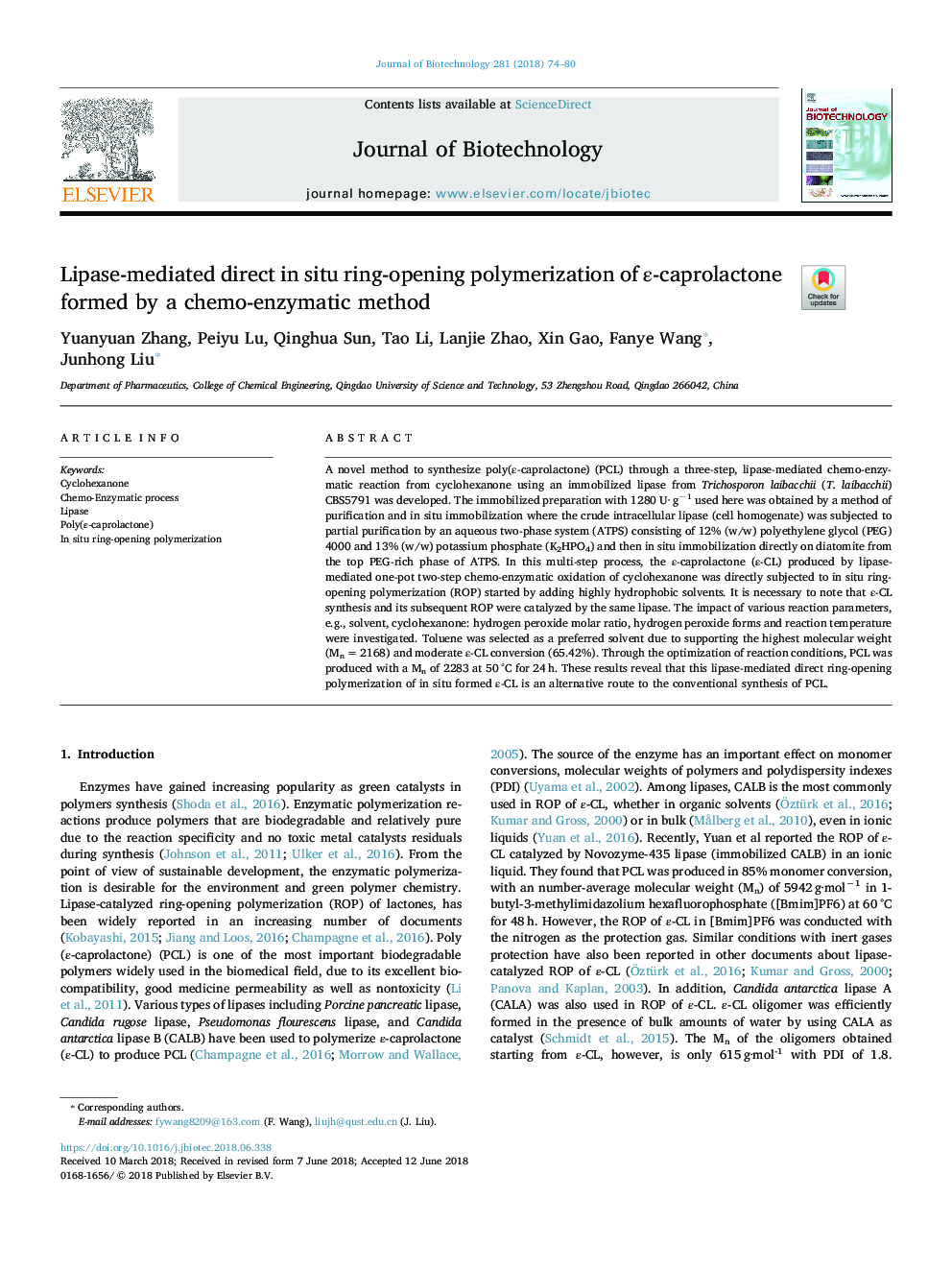| Article ID | Journal | Published Year | Pages | File Type |
|---|---|---|---|---|
| 6490151 | Journal of Biotechnology | 2018 | 7 Pages |
Abstract
A novel method to synthesize poly(ε-caprolactone) (PCL) through a three-step, lipase-mediated chemo-enzymatic reaction from cyclohexanone using an immobilized lipase from Trichosporon laibacchii (T. laibacchii) CBS5791 was developed. The immobilized preparation with 1280 U· gâ1 used here was obtained by a method of purification and in situ immobilization where the crude intracellular lipase (cell homogenate) was subjected to partial purification by an aqueous two-phase system (ATPS) consisting of 12% (w/w) polyethylene glycol (PEG) 4000 and 13% (w/w) potassium phosphate (K2HPO4) and then in situ immobilization directly on diatomite from the top PEG-rich phase of ATPS. In this multi-step process, the ε-caprolactone (ε-CL) produced by lipase-mediated one-pot two-step chemo-enzymatic oxidation of cyclohexanone was directly subjected to in situ ring-opening polymerization (ROP) started by adding highly hydrophobic solvents. It is necessary to note that ε-CL synthesis and its subsequent ROP were catalyzed by the same lipase. The impact of various reaction parameters, e.g., solvent, cyclohexanone: hydrogen peroxide molar ratio, hydrogen peroxide forms and reaction temperature were investigated. Toluene was selected as a preferred solvent due to supporting the highest molecular weight (Mnâ¯=â¯2168) and moderate ε-CL conversion (65.42%). Through the optimization of reaction conditions, PCL was produced with a Mn of 2283 at 50â¯Â°C for 24â¯h. These results reveal that this lipase-mediated direct ring-opening polymerization of in situ formed ε-CL is an alternative route to the conventional synthesis of PCL.
Related Topics
Physical Sciences and Engineering
Chemical Engineering
Bioengineering
Authors
Yuanyuan Zhang, Peiyu Lu, Qinghua Sun, Tao Li, Lanjie Zhao, Xin Gao, Fanye Wang, Junhong Liu,
